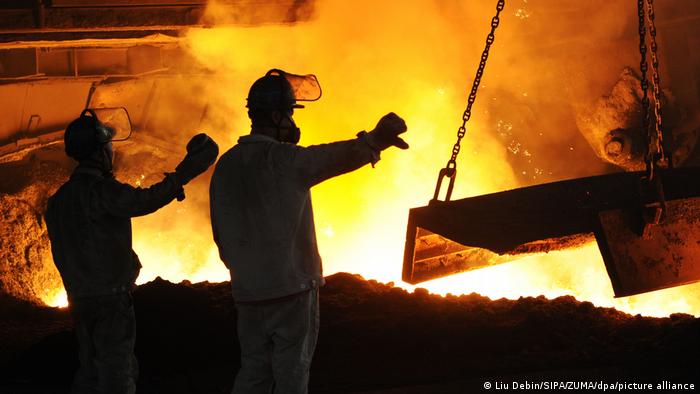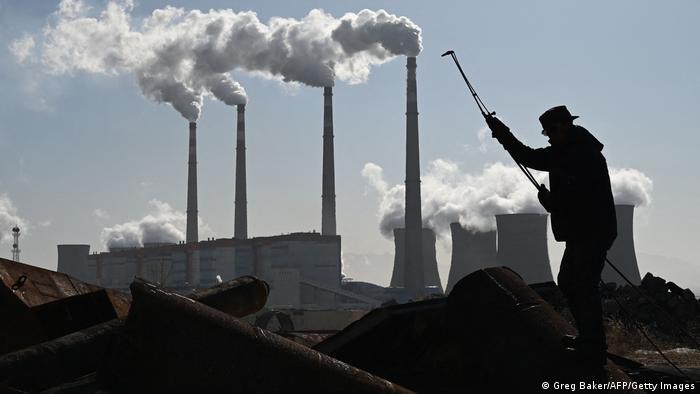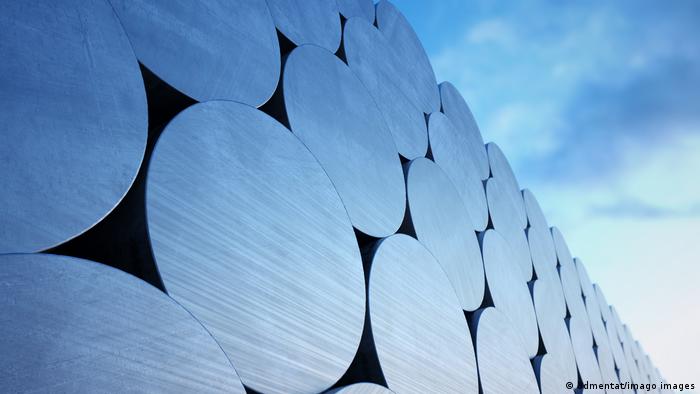[ad_1]
Earlier this year, the European Union announced plans for a 55% reduction in its greenhouse gas emissions by 2030, as opposed to the 40% it had set as an earlier target.
Achieving this more ambitious goal will require the EU to rapidly restructure its high-emission industries. That, in turn, means major polluters in the bloc will be asked to pay higher CO2 prices, all but forcing them to switch to more climate-friendly production processes.
To ensure that manufacturers within the EU aren’t disadvantaged by competition outside its borders, the European Commission is also planning a CO2 tax on imports from abroad. The Carbon Border Adjustment Mechanism (CBAM) as it is called, is a global first that will affect imported products from particularly high-emitting industries such as steel, cement, aluminum, fertilizers and energy production.
Under the new rules, which the European Commission says will come into full effect from 2026, a Chinese steel company that generates more CO2 emissions during production than a European counterpart, for example, would be subject to the EU’s per ton CO2 price when importing.
Sustainable, but not competitive?
One goal is to encourage industrial companies in the EU to produce more sustainably without being disadvantaged in the global price war by increased CO2 levies.
“The basic economics is quite simple,” Hector Pollitt, a Cambridge University economist said. “We have high carbon prices in the EU. We don’t have any high carbon prices in other countries. The EU-producers would be at a competitive disadvantage against other countries.
Some 11,000 industrial operations in the EU, such as oil refineries and steel mills, as well as aluminum, metal, cement and chemical companies, already have to pay levies on their CO2 emissions above a certain level.
But under the so-called EU Emissions Trading Scheme, which was set up in 2005 as market instrument to reduce carbon output, the CO2 price has been very low. In 2016 it was just €3 ($3.40) per ton.
It is currently changing. In 2021, the price per ton of CO2 rose to €69 in the EU, having more than doubled within a year.
The new mechanism is designed as a safeguard against companies moving out of the EU to countries with lower environmental standards in order to sell the goods from there into the EU.
“The rationale is to address the risk of carbon leakage which can undermine our efforts when production is moved elsewhere to avoid EU carbon pricing,” EU Economy Commissioner Paolo Gentiloni said in a statement on the plans.
Trade war or the ‘carbon club?
The countries most likely to be affected are Russia, China and Turkey. It remains to be determined if the tax planned will be recognized by the World Trade Organization.
It is possible that there could be conflict. Sanna Markkanen, Senior Analyst at Cambridge’s CISL says if countries perceive the CO2 tax as protectionism and respond by introducing countermeasures, it could lead to a trade war.
But Commissioner Gentiloni says the mechanism is “an environmental policy tool, not a tariff tool.”
Markkanen also says she is currently seeing more positive signs overall for the development of a sustainable international trading system.
Markkanen stated that the US and EU are trying to collaborate and form a club called the “carbon club”.
Cooperation between the US-EU could increase the cost of “dirty” steel from China.
And that, said Kevin Dempsey, President of the of the American Iron and Steel Institute, the umbrella organization of North American steel producers, could potentially offset the competitive advantage of Chinese companies that benefit from government subsidies and lower environmental standards.
The EU’s carbon dioxide levy will not only protect its economy, but it will also put pressure on other countries for their economies to be more sustainable.
Tensions on other countries rising
Some signs suggest that it is already being felt. The planned tax has been cited as helping to persuade Turkey to ratify the Paris climate agreement in October. Dan Tehan, the Australian Trade Minister, recently stated that tariffs could cause serious problems for Australia’s export industry.
Australia continues to plan a massive expansion of fossil fuel energy production and is one of the world’s largest CO2 emitters. However, Australia has established a net-zero climate goal by 2050.
According to calculations by researchers Sanna Markkanen and Hector Pollitt, companies in the EU could benefit from higher demand and higher prices for more climate-damaging goods from abroad. A report on their findings suggests that by 2030, the EU could see an increase of up to 0.2% in gross domestic product, and the creation of as many as 600,000 new jobs.
Poor countries could be affected by environmental standards
While the mechanism could serve as leverage with large trading partners and financially powerful countries, Chiara Putaturo, Inequality and Tax Policy Adviser at the EU office of anti-poverty NGO Oxfam, says poorer nations that rely heavily on trade with the EU could be left behind.
She said price premiums on products could result in lower exports to the EU, resulting in “negative impacts on the jobs and also in general on domestic revenue mobilization in these in these countries. This could also impact the country’s investment in a green transition.
The new tax will have a major impact on the steel- and aluminum industries in Mozambique (Zambia), Sierra Leone (Sierra Leone) and The Gambia. The EU imports of goods from the least developed countries (LDCs), account for only 0.1%. However, higher levies could lead to serious consequences. Mozambique is an example of a country where more than half of its steel and aluminium exports go to Europe. It has 70% of its population living below the poverty level.
Rules are still unclear
There are still no exceptions for certain countries. According to Oxfam, the richest 10% of the world’s population — most of whom live in the US and EU — accounted for about half of global greenhouse gas emissions between 1990 and 2015. However, only 7 percent of the emissions were caused by the world’s poorest 50 percent.
Putaturo explained that it was important to ask other countries to cover the damage they have caused.
The exact method of calculating a product’s carbon footprint is also unclear. Sanna Markkanen, CISL, stated that there is not yet a standard method. She added that it could prove costly for developing countries to establish these methods, which would make it difficult for smaller producers to create these mechanisms.
So far, there are no plans to channel EU revenue from the carbon tax into sustainable development. Many non-governmental organisations are calling for this money in order to fund more climate protection and adaptation technologies in the EU and the Global South.
This was the translation of the original German.
[ad_2]






